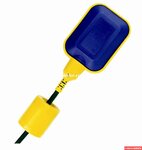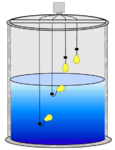hemnath
Advanced Member level 3
Hi,
I have designed the water level controller for my tank. Prototype is working good. But the problem is, I have used conductivity method.
I have used simple telephone cables for sensing the water level. Due to corrosion, it wont last long.
I have read, that using stainless steel rod, the corrosion can be much reduced. But the problem will occurs slowly.
Also i have read in similar thread, using AC supply to the rod, corrosion can be reduced.
But i want some good solution to solve this.
Float sensors can be best choice??? or is there any other sensors??
I'm designing it for very low cost. How to make simple float sensor???
Can anyone help me to solve this issue.
Thanks in advance
I have designed the water level controller for my tank. Prototype is working good. But the problem is, I have used conductivity method.
I have used simple telephone cables for sensing the water level. Due to corrosion, it wont last long.
I have read, that using stainless steel rod, the corrosion can be much reduced. But the problem will occurs slowly.
Also i have read in similar thread, using AC supply to the rod, corrosion can be reduced.
But i want some good solution to solve this.
Float sensors can be best choice??? or is there any other sensors??
I'm designing it for very low cost. How to make simple float sensor???
Can anyone help me to solve this issue.
Thanks in advance

